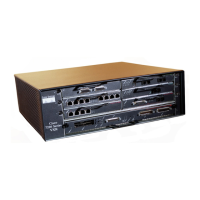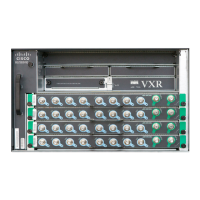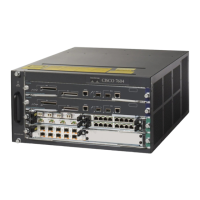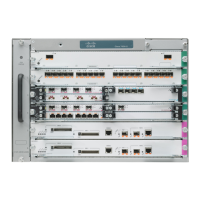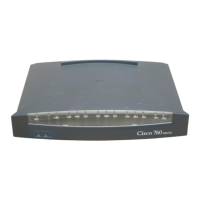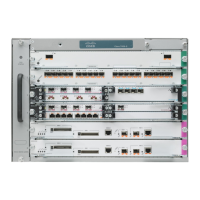2-9
Cisco 7206 Installation and Configuration Guide
OL-5102-02
Chapter 2 Preparing for Installation
Initial Configuration Information
The rack-mount and cable-management kit includes the following parts:
• Two rack-mount brackets for mounting the chassis in the rack
• Four M4 x 8-mm Phillips flathead screws to secure the rack-mount brackets to the chassis
• Six 10-32 x 3/8-inch slotted binderhead screws to secure the rack-mount brackets to the rack rails
• Two cable-management brackets to relieve the strain on installed port adapter interface cables
• Four M4 x 8-mm Phillips flathead screws to secure the cable-management brackets to the chassis or
the rack-mount brackets
In addition, you might need the following external equipment:
• Data service unit (DSU) to connect each serial port to an external network
• One serial port adapter cable for each serial port to connect the port with the remote device or
network.
• T1 channel service unit/data service unit (CSU/DSU) that converts the High-Level Data Link
Control (HDLC) synchronous serial data stream into a T1 data stream with the correct framing and
ones density to connect a serial port to a T1 network. (Some telephone systems require a minimum
number of 1 bits per time unit in a data stream, called ones density.) Several T1 CSU/DSU devices
are available as additional equipment, and most provide either a V.35, EIA/TIA-449, or EIA-530
electrical interface.
• Ethernet transceiver
• Token Ring multistation access unit (MSAU)
• Optical bypass switch or concentrator for multimode Fiber Distributed Data Interface (FDDI)
connections
Initial Configuration Information
After you install the chassis and verify that all the hardware is operating properly, you must configure
the system and individual interfaces before you can connect your system to external networks. You can
use the setup command facility or standard configuration commands to enter the configuration
information.
Before you begin, you should be prepared with global (system-wide) parameters such as host names,
passwords, and routing protocols, and configuration information for each interface such as addresses,
rates or speeds of operation, routing protocol specifics, and so on.
Following is some of the information you are likely to need, depending on your configuration:
• Host name for the router
• Passwords to prevent unauthorized privileged-level access to the EXEC command interpreter and
for individual virtual terminal lines
• Protocols you plan to route.
• Bridging configuration (if you plan to use bridging and, if so, on which interfaces)
• Internet Protocol (IP) addresses and subnet masks if you are routing IP
• Zone names, network numbers, or node numbers for the new interfaces if required
• Operating speeds for specific interfaces—for example, Token Ring interfaces operate at either
4 or 16 Mbps, and serial interfaces operate at speeds of up to 2 Mbps. The speed of an interface
often depends on the speed of the remote device to which it is attached.
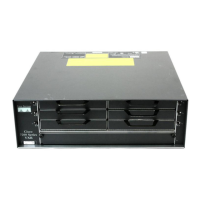
